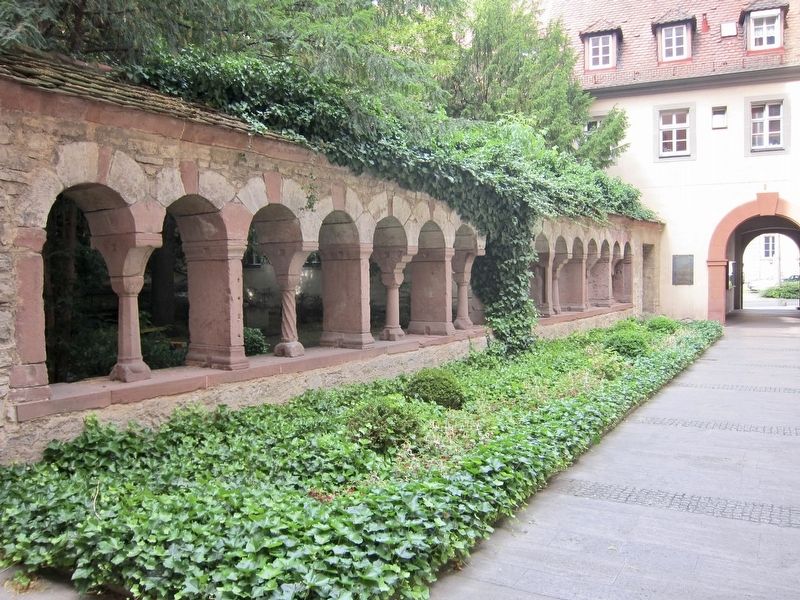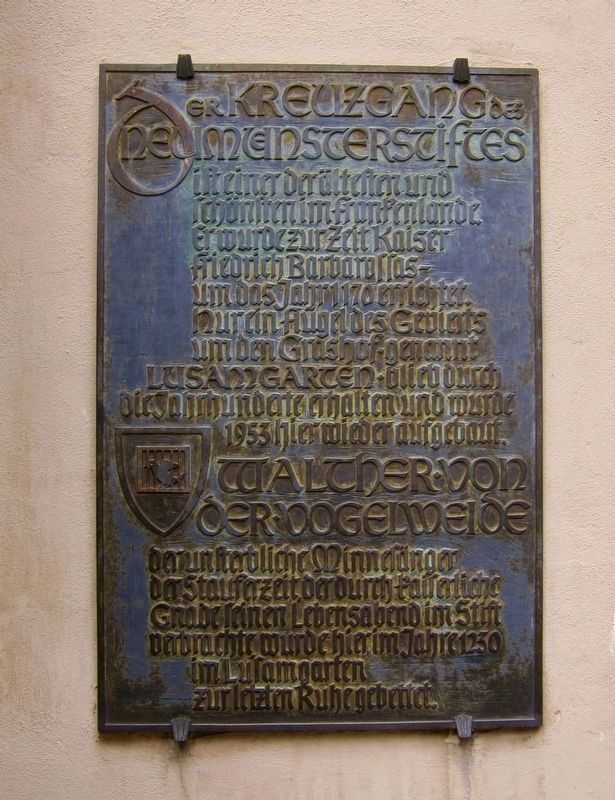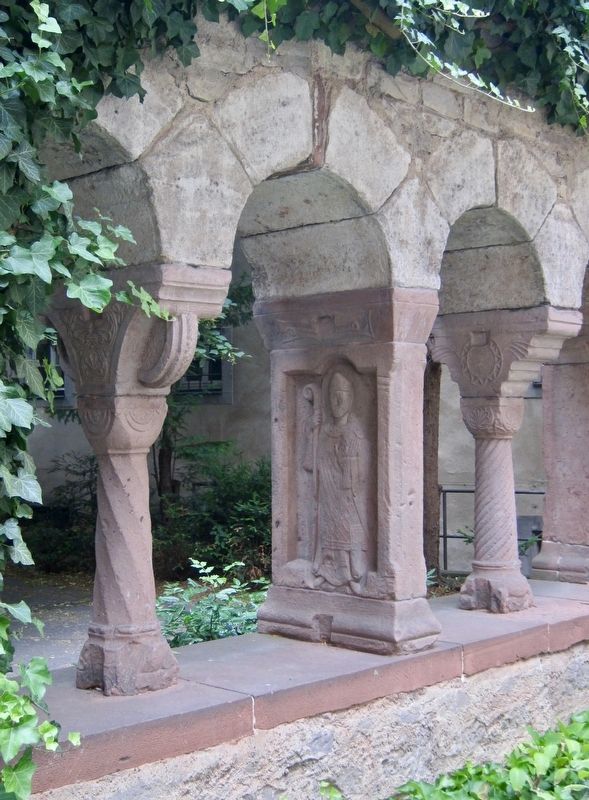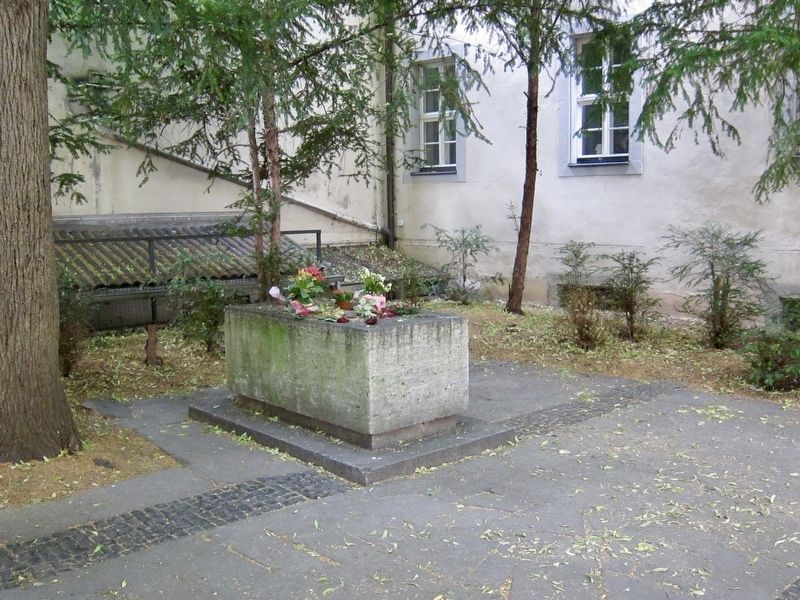Der Kreuzgang des Neumuensterstiftes / The Cloister of the Neumuenster Seminary
Walther von der Vogelweide der unsterbliche Minnesänger des Staufferzeit der durch kaiserliche Gnade seinen Lebendsabend im Stift verbrachte, wurde hier im Jahre 1230 im Lusamgarten zur letzen Ruhe gebettet.
Walther von der Vogelweide, the immortal minstrel from the Stauffer era (the Staufer dynasty: 1138 - 1254 AD), who because
The cloister of the Neumuenster Seminary is one of the nicest and oldest in Franconia. (Franconia is the cultural region in which Würzburg is located.) It was constructed during the reign of the Emperor Friedrich Barbarossa - around the year 1170. Only one wing that enclosed the grassy courtyard square, called the Lusam Garden, has survived the intervening centuries, and was reconstructed here in 1953.
Topics. This historical marker is listed in these topic lists: Arts, Letters, Music • Churches & Religion • Education.
Location. 49° 47.643′ N, 9° 55.906′ E. Marker is in Würzburg, Bayern (Bavaria). Marker can be reached from Martinstrasse just south of Eichhornstrasse. Touch for map. Marker is at or near this postal address: Martinstrasse 4, Würzburg BY 97070, Germany. Touch for directions.
Other nearby markers. At least 8 other markers are within walking distance of this marker. Schönbornkapelle / Schönborn Chapel (within shouting distance of this marker); Hof Guttenberg / St. Gallus House (within shouting distance of this marker); Paradeplatz / Parade Grounds (about 120 meters away, measured in a direct line); Würzburg Sinti Memorial (about 150 meters away); Emy Roeder (about 150 meters away); Würzburg Jewish Deportation Memorial (about 210 meters away); Augustiner Kirche / Church of St. Augustine (about 240 meters away); Hof Castell (approx. 0.2 kilometers away). Touch for a list and map of all markers in Würzburg.
More about this marker. The marker is located in a courtyard just off of Martinstrasse, just north of the Würzburg Cathedral.
Also see . . . 
1. Lusamgärtchen (WürzburgWiki, in German). (Translated and paraphrased:) The Cloister was rediscovered in the 1880's during demolition of an outbuilding of the Neumuenster Seminary, and then rebuilt/installed in the Franconian Luitpold Museum in the early 1900's. The museum was destroyed in aerial bombing of Würzburg on March 16, 1945, but the Cloister was undamaged. In 1953 the Cloister was returned to the seminary grounds and re-installed. (Submitted on January 1, 2018.)
2. Walther von der Vogelweide (Wikipedia). "Walther von der Vogelweide (c. 1170 – c. 1230) was a Minnesänger, who composed and performed love-songs and political songs ("Sprüche") in Middle High German. Walther has been described as greatest German lyrical poet before Goethe; his hundred or so love-songs are widely regarded as the pinnacle of Minnesang, the medieval German love lyric, and his innovations breathed new life into the tradition of courtly love. He is also the first political poet writing in German, with a considerable body of encomium, satire, invective, and moralising." (Submitted on January 1, 2018.)
Credits. This page was last revised on January 28, 2022. It was originally submitted on January 1, 2018, by Andrew Ruppenstein of Lamorinda, California. This page has been viewed 170 times since then and 12 times this year. Photos: 1, 2, 3, 4. submitted on January 1, 2018, by Andrew Ruppenstein of Lamorinda, California.


